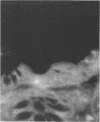Abstract
To serially examine the immunopathogenesis and histopathology of infection with Chlamydia pneumoniae, we inoculated two cynomolgus monkeys in the conjunctival sac, nose, and nasopharynx with C. pneumoniae TWAR. After inoculation, C. pneumoniae was isolated from the inoculation sites and the rectums of both monkeys for a period of 5 weeks. After a second inoculation, C. pneumoniae was recovered from the inoculation sites and the rectums of both monkeys for 20 weeks. A third inoculation with C. pneumoniae caused very little productive infection at any site. Prior C. pneumoniae infection did not prevent subsequent C. trachomatis serovar E (Bour strain) infection. Clinical and histopathologic ocular responses to C. pneumoniae infection were mild compared with those to infection with C. trachomatis serovar E. Rectal infection, demonstrated by culture isolation and immunohistopathology, occurred without direct experimental inoculation. Both immunofluorescent staining of mucosal smears with monoclonal antibodies and tissue culture were able to detect C. pneumoniae infection. Experimental nonhuman primate infection with C. pneumoniae appears to be clinically and histopathologically mild and can occur at extrapulmonary sites.
Full text
PDF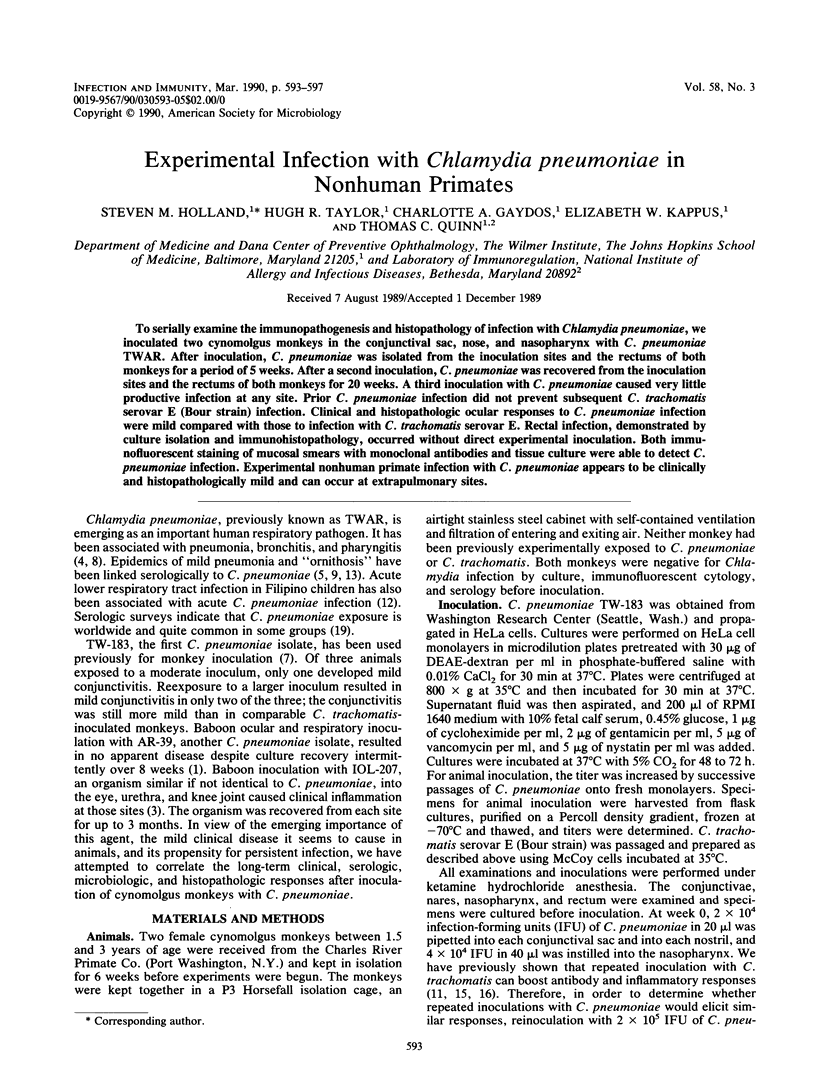
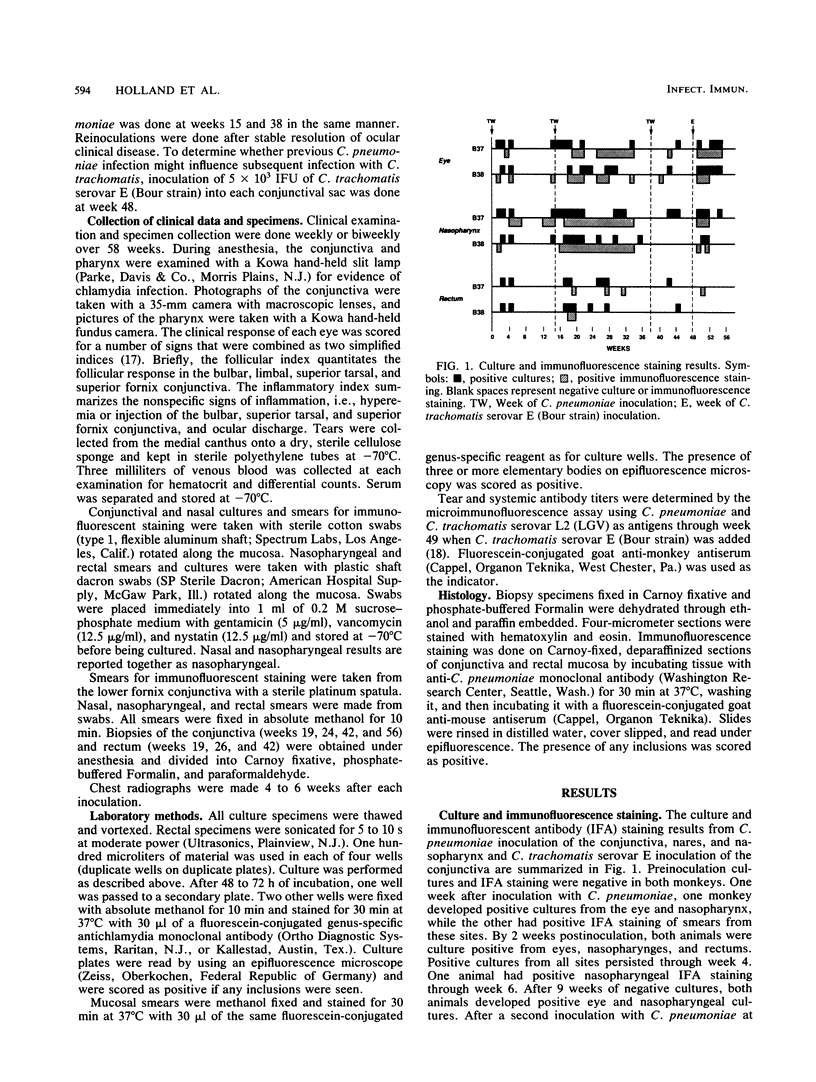
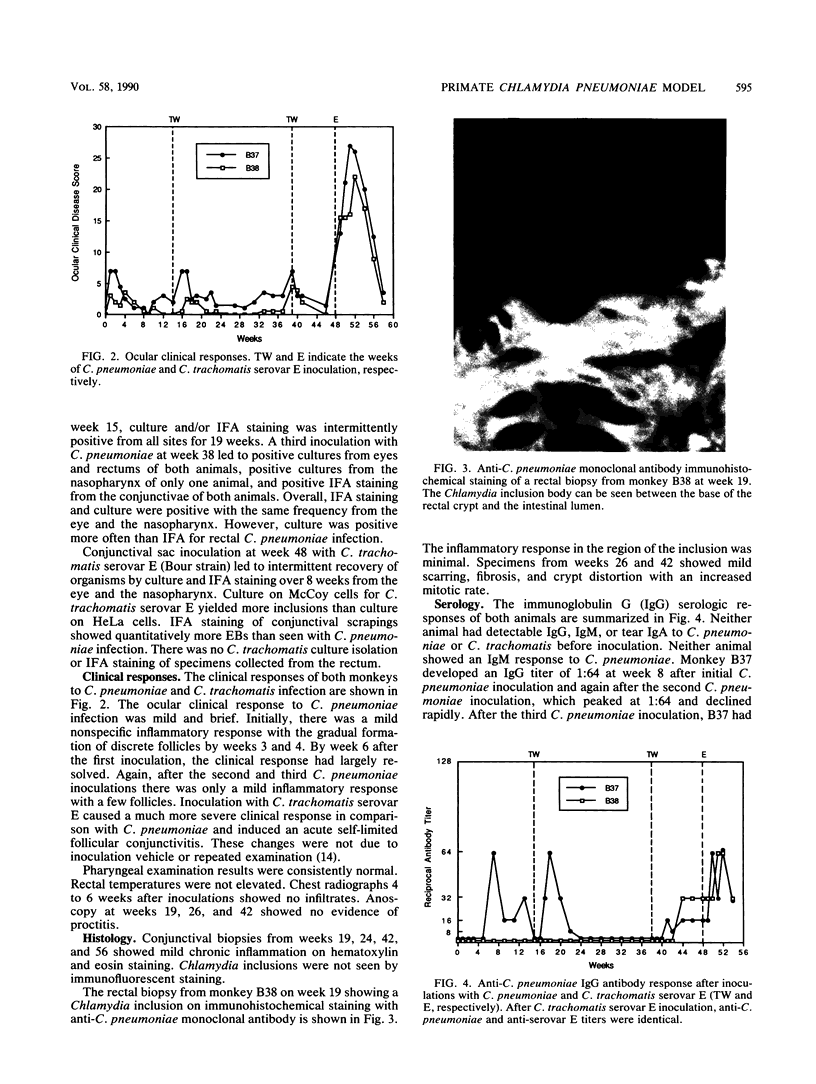
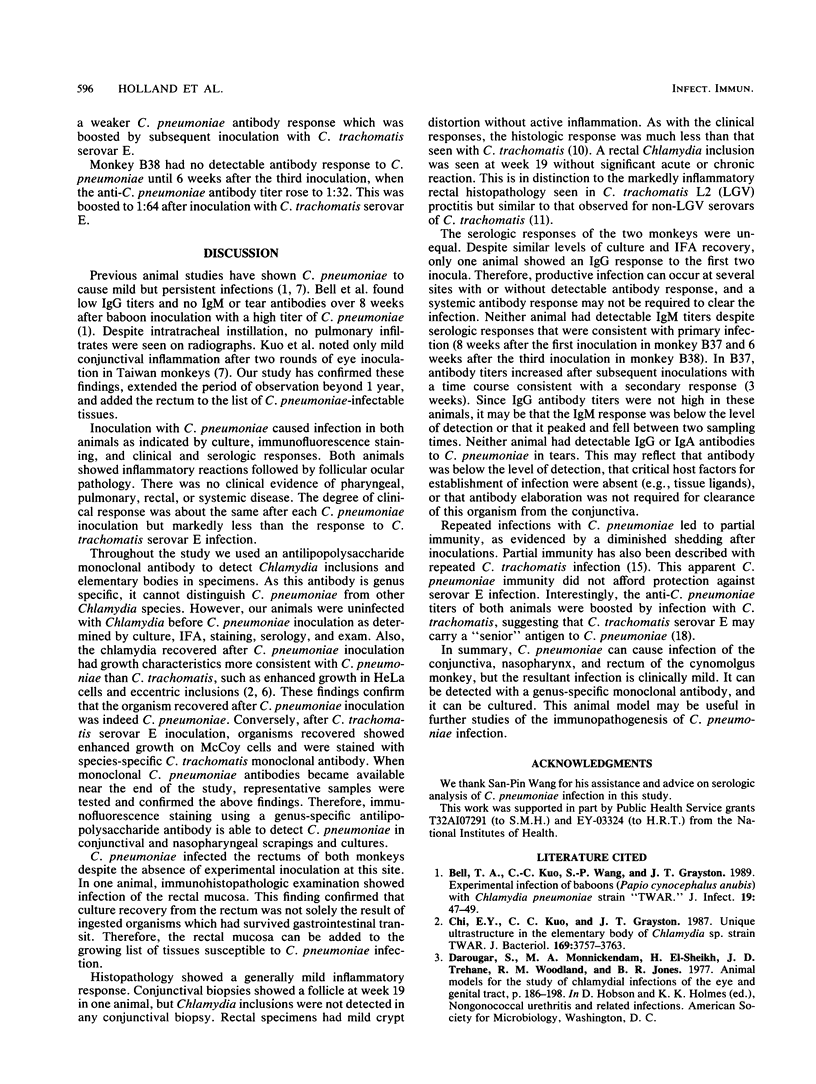
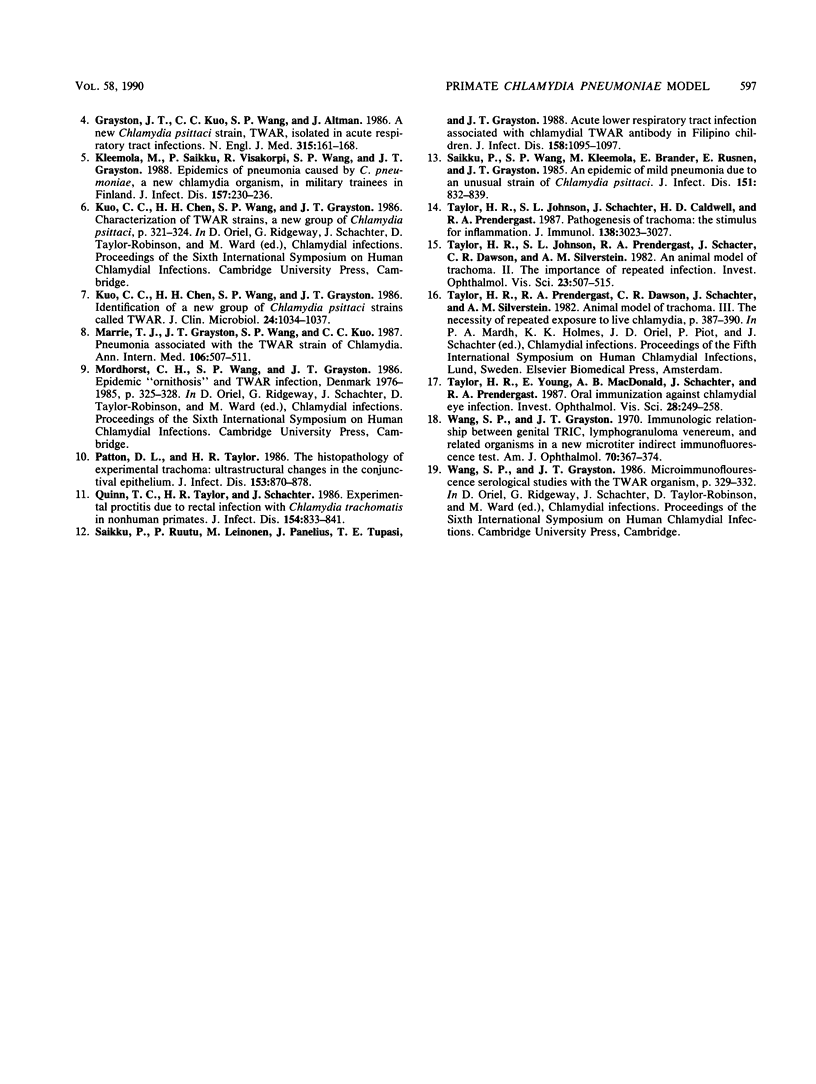
Images in this article
Selected References
These references are in PubMed. This may not be the complete list of references from this article.
- Bell T. A., Kuo C. C., Wang S. P., Grayston J. T. Experimental infection of baboons (Papio cynocephalus anubis) with Chlamydia pneumoniae strain 'TWAR'. J Infect. 1989 Jul;19(1):47–49. doi: 10.1016/s0163-4453(89)94850-0. [DOI] [PubMed] [Google Scholar]
- Chi E. Y., Kuo C. C., Grayston J. T. Unique ultrastructure in the elementary body of Chlamydia sp. strain TWAR. J Bacteriol. 1987 Aug;169(8):3757–3763. doi: 10.1128/jb.169.8.3757-3763.1987. [DOI] [PMC free article] [PubMed] [Google Scholar]
- Grayston J. T., Kuo C. C., Wang S. P., Altman J. A new Chlamydia psittaci strain, TWAR, isolated in acute respiratory tract infections. N Engl J Med. 1986 Jul 17;315(3):161–168. doi: 10.1056/NEJM198607173150305. [DOI] [PubMed] [Google Scholar]
- Kleemola M., Saikku P., Visakorpi R., Wang S. P., Grayston J. T. Epidemics of pneumonia caused by TWAR, a new Chlamydia organism, in military trainees in Finland. J Infect Dis. 1988 Feb;157(2):230–236. doi: 10.1093/infdis/157.2.230. [DOI] [PubMed] [Google Scholar]
- Kuo C. C., Chen H. H., Wang S. P., Grayston J. T. Identification of a new group of Chlamydia psittaci strains called TWAR. J Clin Microbiol. 1986 Dec;24(6):1034–1037. doi: 10.1128/jcm.24.6.1034-1037.1986. [DOI] [PMC free article] [PubMed] [Google Scholar]
- Marrie T. J., Grayston J. T., Wang S. P., Kuo C. C. Pneumonia associated with the TWAR strain of Chlamydia. Ann Intern Med. 1987 Apr;106(4):507–511. doi: 10.7326/0003-4819-106-4-507. [DOI] [PubMed] [Google Scholar]
- Patton D. L., Taylor H. R. The histopathology of experimental trachoma: ultrastructural changes in the conjunctival epithelium. J Infect Dis. 1986 May;153(5):870–878. doi: 10.1093/infdis/153.5.870. [DOI] [PubMed] [Google Scholar]
- Quinn T. C., Taylor H. R., Schachter J. Experimental proctitis due to rectal infection with Chlamydia trachomatis in nonhuman primates. J Infect Dis. 1986 Nov;154(5):833–841. doi: 10.1093/infdis/154.5.833. [DOI] [PubMed] [Google Scholar]
- Saikku P., Ruutu P., Leinonen M., Panelius J., Tupasi T. E., Grayston J. T. Acute lower-respiratory-tract infection associated with chlamydial TWAR antibody in Filipino children. J Infect Dis. 1988 Nov;158(5):1095–1097. doi: 10.1093/infdis/158.5.1095. [DOI] [PubMed] [Google Scholar]
- Saikku P., Wang S. P., Kleemola M., Brander E., Rusanen E., Grayston J. T. An epidemic of mild pneumonia due to an unusual strain of Chlamydia psittaci. J Infect Dis. 1985 May;151(5):832–839. doi: 10.1093/infdis/151.5.832. [DOI] [PubMed] [Google Scholar]
- Taylor H. R., Johnson S. L., Prendergast R. A., Schachter J., Dawson C. R., Silverstein A. M. An animal model of trachoma II. The importance of repeated reinfection. Invest Ophthalmol Vis Sci. 1982 Oct;23(4):507–515. [PubMed] [Google Scholar]
- Taylor H. R., Johnson S. L., Schachter J., Caldwell H. D., Prendergast R. A. Pathogenesis of trachoma: the stimulus for inflammation. J Immunol. 1987 May 1;138(9):3023–3027. [PubMed] [Google Scholar]
- Taylor H. R., Young E., MacDonald A. B., Schachter J., Prendergast R. A. Oral immunization against chlamydial eye infection. Invest Ophthalmol Vis Sci. 1987 Feb;28(2):249–258. [PubMed] [Google Scholar]
- Wang S. P., Grayston J. T. Immunologic relationship between genital TRIC, lymphogranuloma venereum, and related organisms in a new microtiter indirect immunofluorescence test. Am J Ophthalmol. 1970 Sep;70(3):367–374. doi: 10.1016/0002-9394(70)90096-6. [DOI] [PubMed] [Google Scholar]



